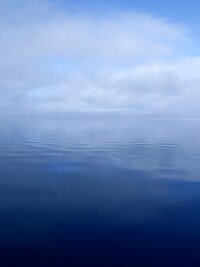
Photo from wikipedia
Abstract. Significance Water and lipid are key participants of many biological processes, but there are few label-free, non-contact optical methods that can spatially map these components in-vivo. Shortwave infrared meso-patterned… Click to show full abstract
Abstract. Significance Water and lipid are key participants of many biological processes, but there are few label-free, non-contact optical methods that can spatially map these components in-vivo. Shortwave infrared meso-patterned imaging (SWIR-MPI) is an emerging technique that successfully addresses this need. However, it requires a dedicated SWIR camera to probe the 900- to 1300-nm wavelength region, which hinders practical translation of the technology. Aim Compared with SWIR-MPI, we aim to develop a new technique that can dramatically reduce the cost in detector while maintaining high accuracy for the quantification of tissue water and lipid content. Approach By utilizing water and lipid absorption features in the 900- to 1000-nm wavelength region as well as optimal wavelength and spatial frequency combinations, we develop a new imaging technique based on spatial frequency domain imaging to quantitatively map tissue water and lipid content using a regular silicon-based camera. Results The proposed method is validated with a phantom study, which shows average error of 0.9 ± 1.2 % for water content estimation, and −0.4 ± 0.7 % for lipid content estimation, respectively. The proposed method is also demonstrated for ex vivo porcine tissue lipid mapping as well as in-vivo longitudinal water content monitoring. Conclusions The proposed technique enables spatial mapping of tissue water and lipid content with the cost in detector reduced by two orders of magnitude compared with SWIR-MPI while maintaining high accuracy. The experimental results highlight the potential of this technique for substantial impact in both scientific and industrial applications.
Journal Title: Journal of Biomedical Optics
Year Published: 2022
Link to full text (if available)
Share on Social Media: Sign Up to like & get
recommendations!